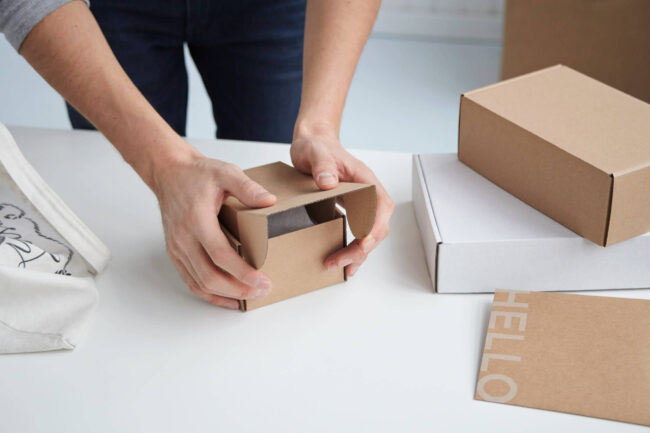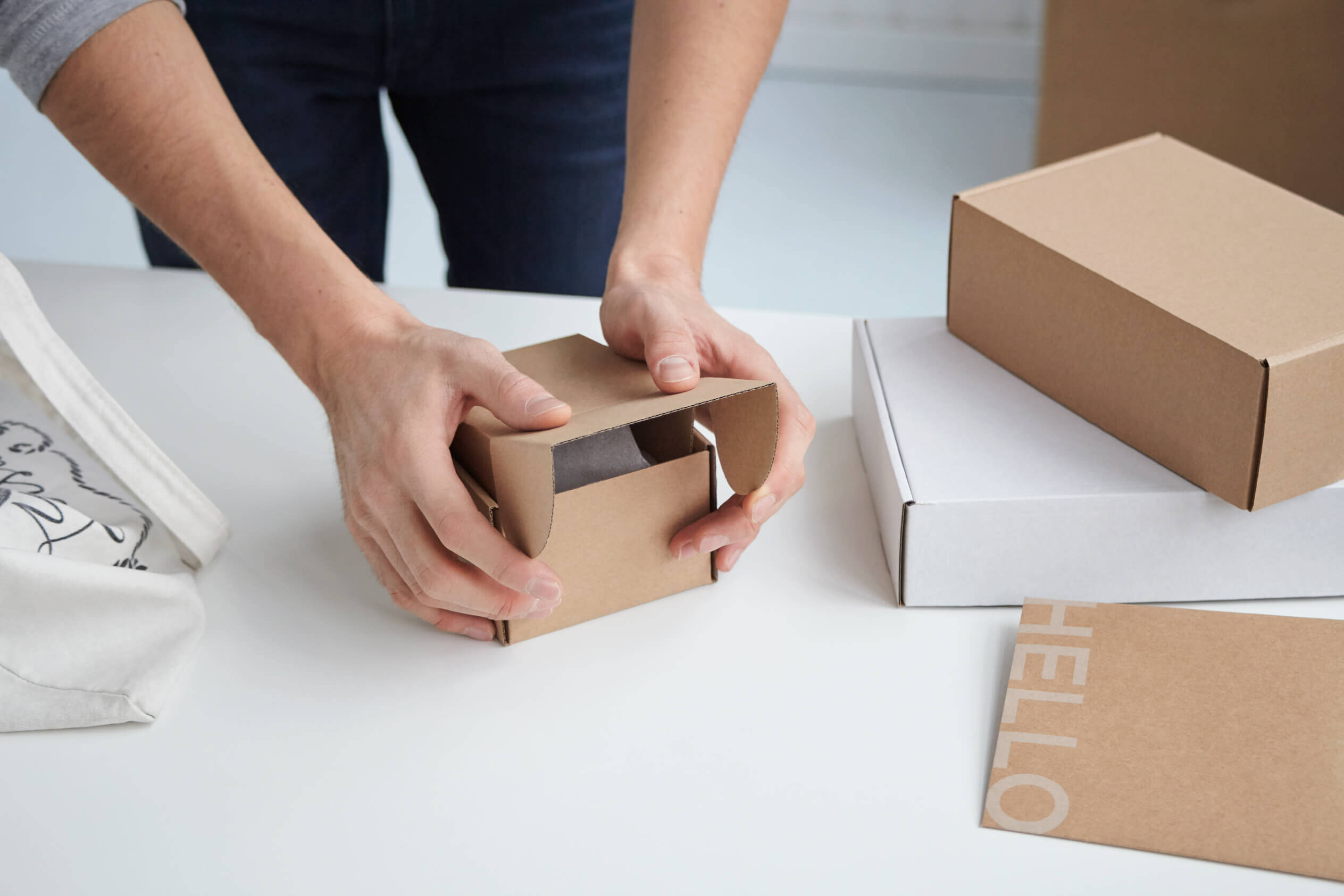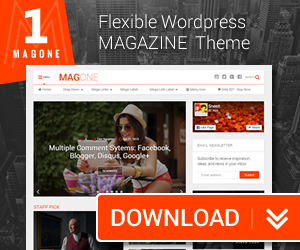In the contemporary marketplace, boxed packaged goods have become a cornerstone of product presentation and consumer interaction. Whether you’re buyi
In the contemporary marketplace, boxed packaged goods have become a cornerstone of product presentation and consumer interaction. Whether you’re buying your favorite snack, a tech gadget, or household essentials, boxed packaging plays a crucial role in protecting the product and enhancing its appeal. This article offers a detailed look at boxed packaged goods, focusing on their significance, material choices, design principles, industry applications, and evolving trends.
What Are Boxed Packaged Goods?
Boxed packaged goods are products that are enclosed within a box or carton to provide protection, facilitate transport, and enable efficient retail display. Boxes used for packaging vary in size, shape, and material, but they share the common goal of securing the product while supporting marketing and branding efforts.
These boxes can range from simple cardboard cartons to elaborate multi-material packaging designed for luxury products. They are used widely across various industries including food and beverage, electronics, pharmaceuticals, toys, and cosmetics.
Importance of Boxed Packaged Goods
Protection and Safety
One of the primary functions of boxed packaging is to protect the product from damage during handling, shipping, and storage. For fragile items, the box often incorporates cushioning materials or partitions to prevent movement and breakage.
Marketing and Branding
The packaging box acts as a brand ambassador on the shelf. High-quality, attractive packaging draws consumer attention, conveys the brand’s message, and differentiates the product from competitors.
Information Delivery
Boxes provide a platform for important product details such as ingredients, usage instructions, safety warnings, and certifications, helping consumers make informed choices.
Convenience and Functionality
Boxes are designed to be easy to handle, open, and sometimes reseal, improving the user experience. Functional packaging may include features like handles, tear strips, or windows to view the product inside.
Environmental Responsibility
With growing consumer awareness, many companies focus on sustainable packaging solutions, using recyclable or biodegradable materials, and minimizing waste.
Types of Materials Used in Boxed Packaging
Cardboard
This is a common material for lightweight products such as cereals, cosmetics, and pharmaceuticals. It is easy to print on and can be recycled, making it a cost-effective and eco-friendly option.
Corrugated Fiberboard
Ideal for heavier or more fragile items, corrugated fiberboard consists of a fluted inner layer sandwiched between two liners. It provides excellent cushioning and rigidity.
Paperboard
Thinner and less robust than corrugated fiberboard, paperboard is used for packaging smaller items like frozen food, confectionery, and medicines.
Plastic-Coated Boxes
Some boxed packages include a thin plastic coating to provide moisture resistance, durability, or improved aesthetics. These are common in food packaging to preserve freshness.

Design Considerations for Boxed Packaged Goods
Structural Integrity
Boxes must be strong enough to withstand stacking, shipping, and rough handling without compromising the product inside. Designers often create custom inserts to stabilize delicate products.
Visual Design and Branding
Color schemes, typography, imagery, and finishes (e.g., matte, glossy, embossing) all play a role in attracting customers. Transparent windows or cutouts are sometimes used to give a glimpse of the product.
Usability
User-friendly features such as easy-open tabs, resealable flaps, and handles enhance consumer satisfaction and brand loyalty.
Compliance and Labeling
Packaging must adhere to regulatory standards, especially for food, pharmaceuticals, and hazardous materials. Labels must provide accurate, clear information.
Industry Applications of Boxed Packaged Goods
Food and Beverage
Cereals, snacks, frozen foods, and beverages commonly use boxed packaging to protect freshness and provide nutritional information.
Electronics
Delicate electronics and accessories are packed in sturdy boxes to prevent damage and theft, often including foam inserts for cushioning.
Pharmaceuticals and Health Products
Medicines and supplements are boxed to maintain hygiene, provide dosage instructions, and ensure tamper evidence.
Cosmetics and Personal Care
Luxurious packaging helps position cosmetics as premium products, while functional boxes keep products secure and protected.
Toys and Games
Boxes for toys often feature colorful, playful designs and clear safety information, appealing to both children and parents.
Current Trends in Boxed Packaged Goods
Sustainable Packaging Solutions
Eco-friendly materials, reduced packaging, and reusable designs are increasingly popular, as brands respond to consumer demand for sustainability.
Interactive and Smart Packaging
Incorporating QR codes, NFC chips, or augmented reality features enhances consumer engagement and provides additional product information.
Minimalism and Transparency
Many brands adopt simple, clean designs with clear messaging to build trust and highlight product quality.
Personalization
Customizable packaging, such as limited editions or personalized prints, helps brands connect more deeply with consumers.
Benefits of Boxed Packaged Goods
- Improved Protection: Minimizes product damage and loss.
- Brand Visibility: Attracts customers and builds brand recognition.
- Customer Convenience: Facilitates easy use and storage.
- Regulatory Compliance: Ensures safety and legal adherence.
- Environmental Benefits: When designed sustainably, reduces ecological impact.
Challenges Faced in Boxed Packaging
- Cost: Premium materials and custom designs can increase expenses.
- Environmental Concerns: Packaging waste remains a global issue.
- Supply Chain: Complex regulations and material sourcing can be hurdles.
- Consumer Expectations: Balancing design, sustainability, and functionality requires innovation.
Conclusion
Boxed packaged goods are more than just containers; they are strategic tools that protect products, communicate brand values, and enhance customer experiences. As the market evolves, packaging must balance aesthetics, functionality, and sustainability to meet both business goals and consumer expectations.
Innovation in materials and design, coupled with a commitment to environmental responsibility, will define the future of boxed packaging — making it an exciting field for brands and consumers alike.
FAQs About Boxed Packaged Goods
Q1: What are boxed packaged goods?
Products enclosed in boxes made of cardboard, corrugated fiberboard, or paperboard, used for protection, display, and transport.
Q2: Why is boxed packaging important?
It protects the product, provides branding opportunities, informs consumers, and offers convenience.
Q3: What materials are used for boxed packaging?
Common materials include cardboard, corrugated fiberboard, paperboard, and plastic-coated paper.
Q4: Are boxed packages recyclable?
Most cardboard and paperboard boxes are recyclable; plastic coatings may complicate recycling.
Q5: How does boxed packaging benefit consumers?
It protects the product, makes it easy to carry and store, and provides clear product information.
Q6: Can boxed packaging be customized?
Yes, boxes can be tailored in size, shape, color, and design to meet brand needs.
Q7: What sustainability trends affect boxed packaging?
Use of recycled materials, biodegradable packaging, reduced material use, and designs for reuse.
Q8: What industries rely on boxed packaged goods?
Food and beverage, electronics, pharmaceuticals, cosmetics, toys, and many more.
Q9: What challenges do manufacturers face in boxed packaging?
Balancing cost, environmental impact, consumer expectations, and supply chain complexity.
Q10: How is technology used in boxed packaging?
Incorporation of QR codes, NFC tags, augmented reality, and smart labels for enhanced consumer engagement.
Must visit: infromednation




COMMENTS